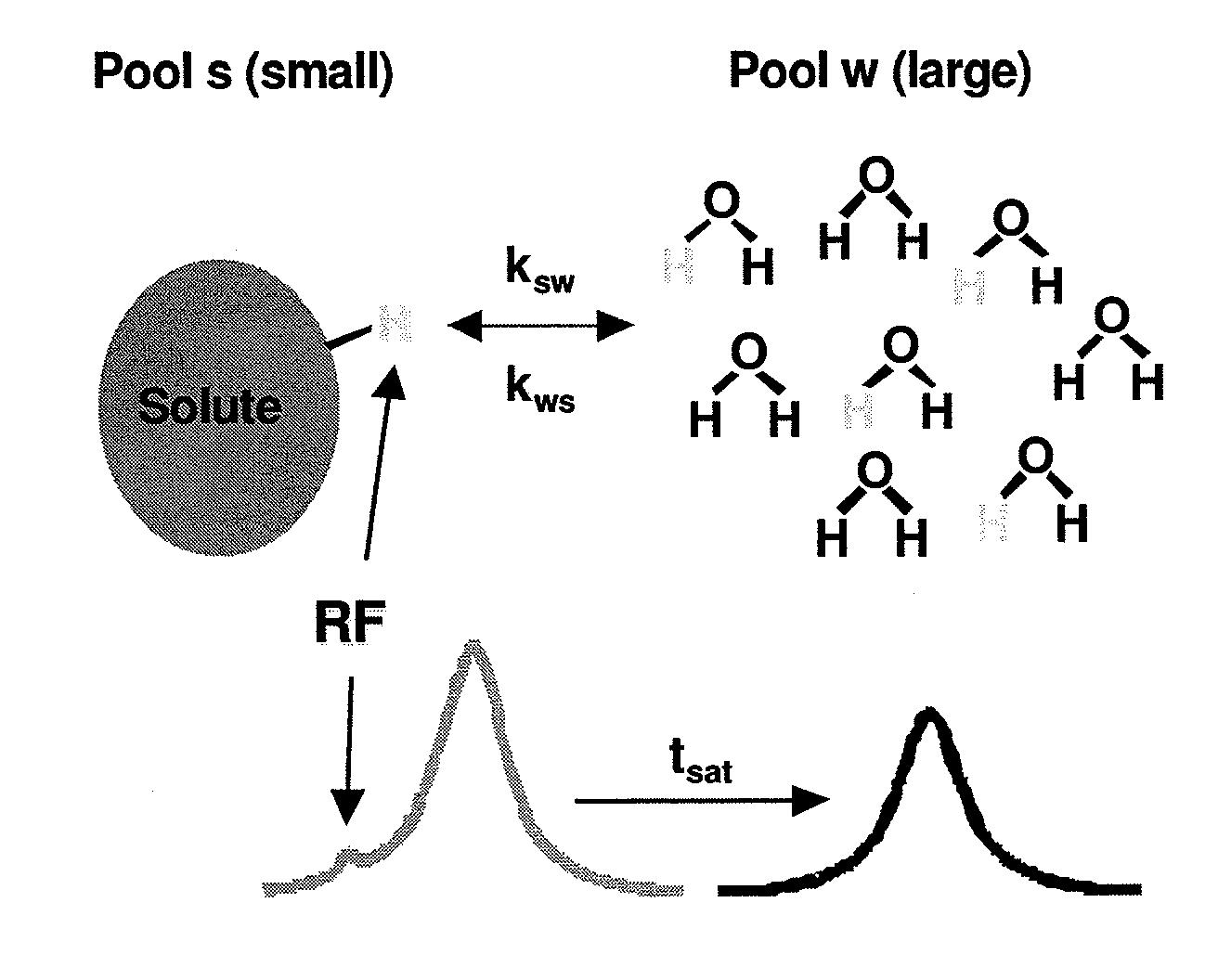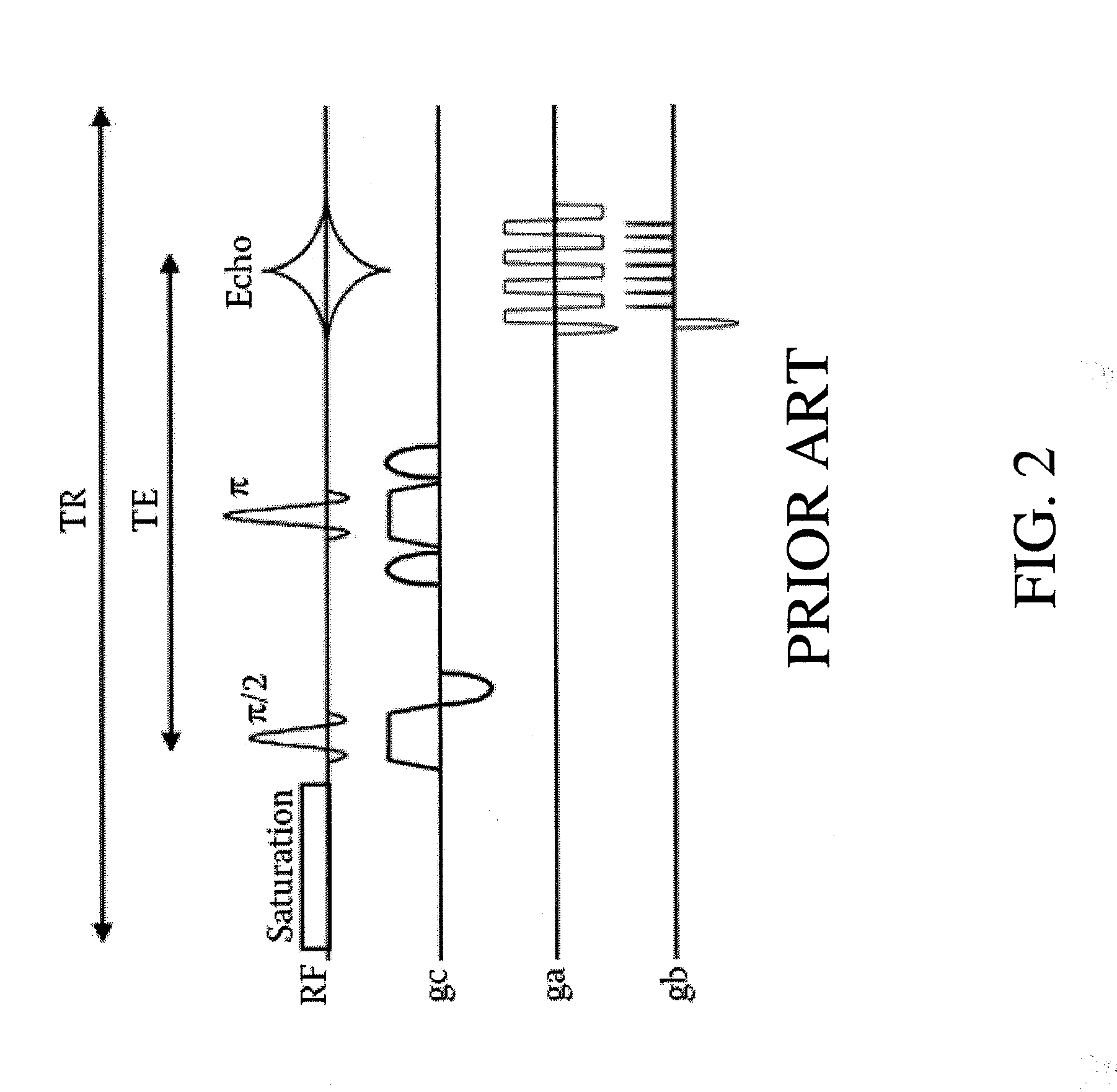Magnetic resonance imaging and spectroscopy of low concentration solutes with exchangeable protons using label transfer modules: frequency transfer, inversion transfer, and dephasing transfer
a technology of exchangeable protons and magnetic resonance imaging, applied in the field of magnetic resonance imaging and spectroscopy, can solve the problems of large disadvantages of optical and radioactive methods in detecting low concentrations of contrast agents, need for reference scans to control, and toxic (super)para-magnetic metals used to enhance relaxation. , to achieve the effect of enhancing the population size of magnetically labeled exchangeables
- Summary
- Abstract
- Description
- Claims
- Application Information
AI Technical Summary
Benefits of technology
Problems solved by technology
Method used
Image
Examples
Embodiment Construction
[0042]Some embodiments of the current invention are discussed in detail below. In describing embodiments, specific terminology is employed for the sake of clarity. However, the invention is not intended to be limited to the specific terminology so selected. A person skilled in the relevant art will recognize that other equivalent components can be employed and other methods developed without departing from the broad concepts of the current invention. All references cited herein are incorporated by reference as if each had been individually incorporated.
[0043]Some embodiments of the current invention provide a group of magnetic resonance imaging (MRI) methodologies or processes for detecting one or more exchangeable protons or protons of exchangeable solute-based water molecules in exogenous or endogenous agents via the water signal without the need to use radiofrequency (RF) saturation. Currently, all of these compounds are being detected using an MR method called radio frequency (R...
PUM
 Login to View More
Login to View More Abstract
Description
Claims
Application Information
 Login to View More
Login to View More - R&D
- Intellectual Property
- Life Sciences
- Materials
- Tech Scout
- Unparalleled Data Quality
- Higher Quality Content
- 60% Fewer Hallucinations
Browse by: Latest US Patents, China's latest patents, Technical Efficacy Thesaurus, Application Domain, Technology Topic, Popular Technical Reports.
© 2025 PatSnap. All rights reserved.Legal|Privacy policy|Modern Slavery Act Transparency Statement|Sitemap|About US| Contact US: help@patsnap.com



